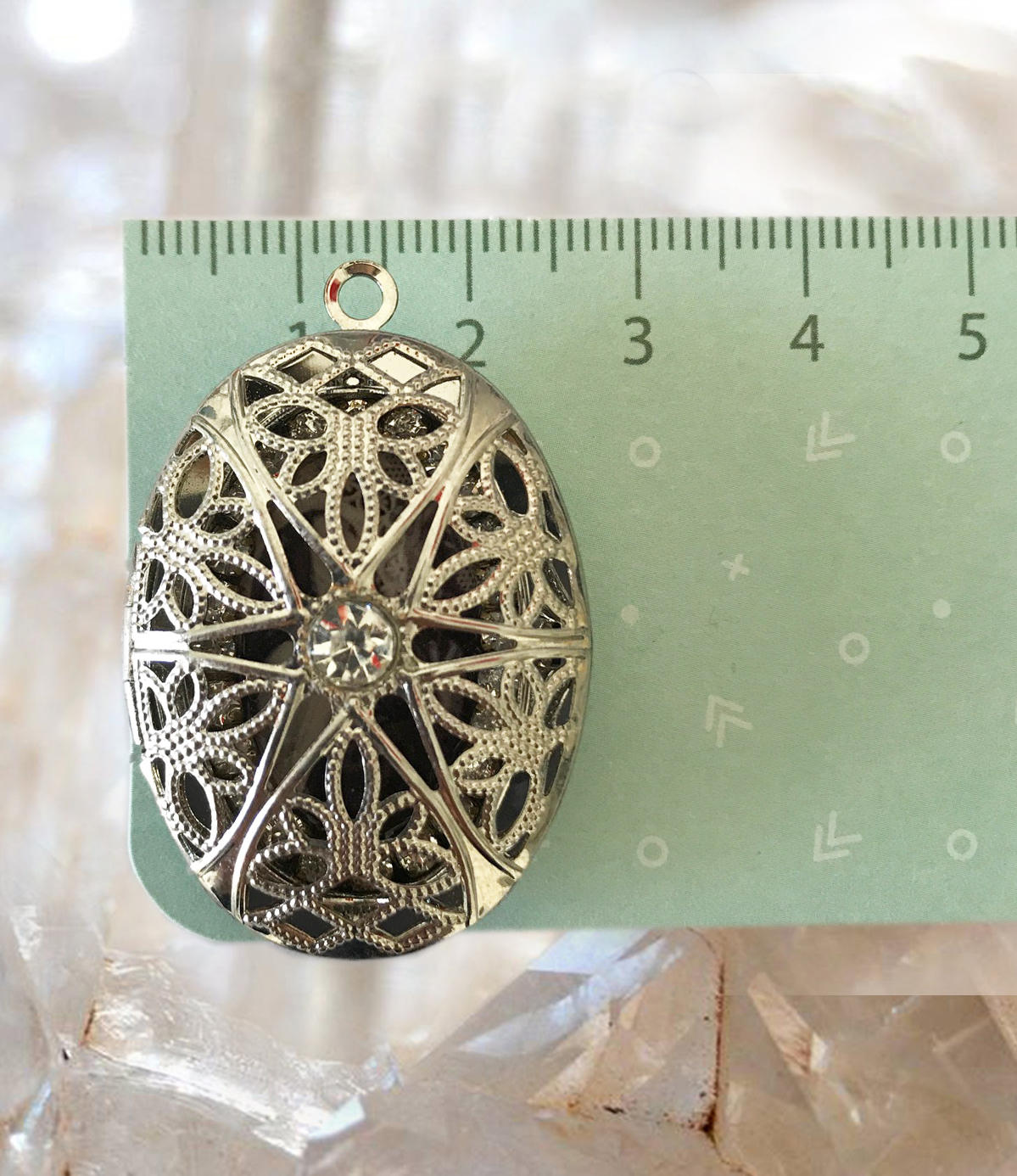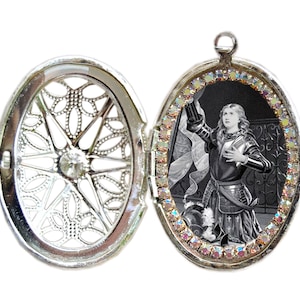






Saint Catherine of Bologna Locket, Catherine de Vigri, Handmade Necklace Catholic Christian Religious Jewelry Medal Pendant
$55.78
(14)
-
Details- Saint Catherine of Bologna
. I created this unique and meaningful locket designs in honor of - Saint Catherine of Bologna.
Express your faith and devotion with this handmade necklace, it's a very powerful piece and a true gift for yourself or someone special.
. Created With:
Beautiful 35x26mm locket with an image of - Saint Catherine of Bologna adorned with clear rhinestones.
This locket comes with chain.
Materials: Rhinestones & Metal
- All medals come with prayer
. Please note This Necklace is handmade by hands that love to create and use their work to inspire people.
Please note that handmade products may vary slightly in appearance. I think that it is great because it makes it unique and I hope that you feel the same.
. The charms are not waterproof.
. Orders are sent by registered email [CTT-Portugal mail] with track and trace system.
. Visit my online shop: www.mariasantissimashop.com
Thank you for visiting. Enjoy!
- About Saint Catherine of Bologna
Feast Day: 9th March
Patron of Arts
A fifteenth-century cloistered nun who lived and died in relative obscurity doesn’t seem the most obvious choice to be Patron Saint of Artists. Yet a closer look at the life of St. Catherine of Bologna shows that she is indeed a saint worthy to intercede for and inspire artists. Her creative spirit, talents, visions, and struggle with doubts make her a saint even modern-day artists can relate to.
St. Catherine was born on Sept. 8, 1413, in Bologna, Italy to an aristocratic family. Her father, a diplomat to the Marquis of Ferrara, sent her to court when she was 11 to be a companion to the Marquis’ daughter, Princess Margarita. At the time, the city of Ferrara was becoming a cultural center, and so the young girls had an excellent education in music, literature, painting, and dancing. Catherine particularly excelled at miniature painting, Latin, and the viola.
When Margarita became engaged, she wanted Catherine to remain her companion, but Catherine felt called to the religious life. At 14, she became a Franciscan Tertiary, an order of lay women who followed the ways of St. Francis. A few years later, dissension in the community led Catherine and others to join the Poor Clares, a contemplative order founded by St. Francis and St. Clare of Assisi.
In spite of her aristocratic background and education, Catherine willingly served in the most humble roles at the convent, including laundress, baker, and caretaker to the animals. Late in her life, she obediently left her beloved Ferrara monastery to form a new convent in Bologna, where she served as abbess despite her desire for a less prominent role.
She continued in her artistic pursuits, playing the viola (even on her deathbed), painting religious pictures (her painting of St. Ursula hangs today in a gallery in Venice), copying out and illuminating her breviary (once belonging to Pius IX and now on display at Oxford), and writing spiritual guides and poetry.
Scholars and religious have shown a renewed interest in the guide she wrote for novices, The Seven Spiritual Weapons. One of the “weapons” she describes in that treatise might inspire Catholic artists today: in exhorting her sisters to trust in God, she tells them, “to believe that alone we will never be able to do something truly good.”
Her life St. Catherine experienced mystical visions, which she documented throughout her treatise. She wrote that she had the ecstatic experience of having the baby Jesus placed in her arms by the Blessed Mother. She was also tormented by visions of the devil, but she was able to overcome these after many years of prayer.
At age 49, she became seriously ill and died a few months later. As was the custom of the Poor Clares, she was buried without a coffin. She was exhumed 18 days later after visitors noticed a sweet smell coming from her grave and experienced some miracles. Her body was found to be flexible and uncorrupted. Six hundred years later, her body remains intact. Her skin has blackened from exposure to oil lamps and soot, but still she sits, clothed in her nun's robes, on a golden throne behind a glass case in the Church of the Saint in Bologna, resplendent in death as she would never have wanted to be in life.
She was canonized in 1712 and her feast day is March 9. -
Shipping & Policies
Shipping from Portugal
Processing time
3-5 business days
Estimated shipping times
- United States : 15 - 20 business days
- Europe : 5 - 10 business days
I'll do my best to meet these shipping estimates, but can't guarantee them. Actual delivery time will depend on the shipping method you choose.
Customs and import taxes
Buyers are responsible for any customs and import taxes that may apply. I'm not responsible for delays due to customs.
Payment Options
Returns & Exchanges
I gladly accept returns and cancellations
Just contact me within: 14 days of delivery
Ship items back to me within: 30 days of delivery
- Custom or personalized orders
- Perishable products (like food or flowers)
- Digital downloads
- Intimate items (for health/hygiene reasons)
-
Reviews
Reviews (14)
Average:
Apr 30, 2024
Great seller! Lovely communication and a quality gift.
Sep 17, 2023
Beautiful item; friendly and quick communication
Jul 27, 2023
Very beautiful. I bought it for my granddaughter and it looks beautiful on her.
May 17, 2023
Beautiful locket with a unique design! My daughter loved this Confirmation gift.
Mar 16, 2023
I am so happy with this Catherine of Bologna medal! It's absolutely gorgeous and beautifully made. Would shop from this store again!!



